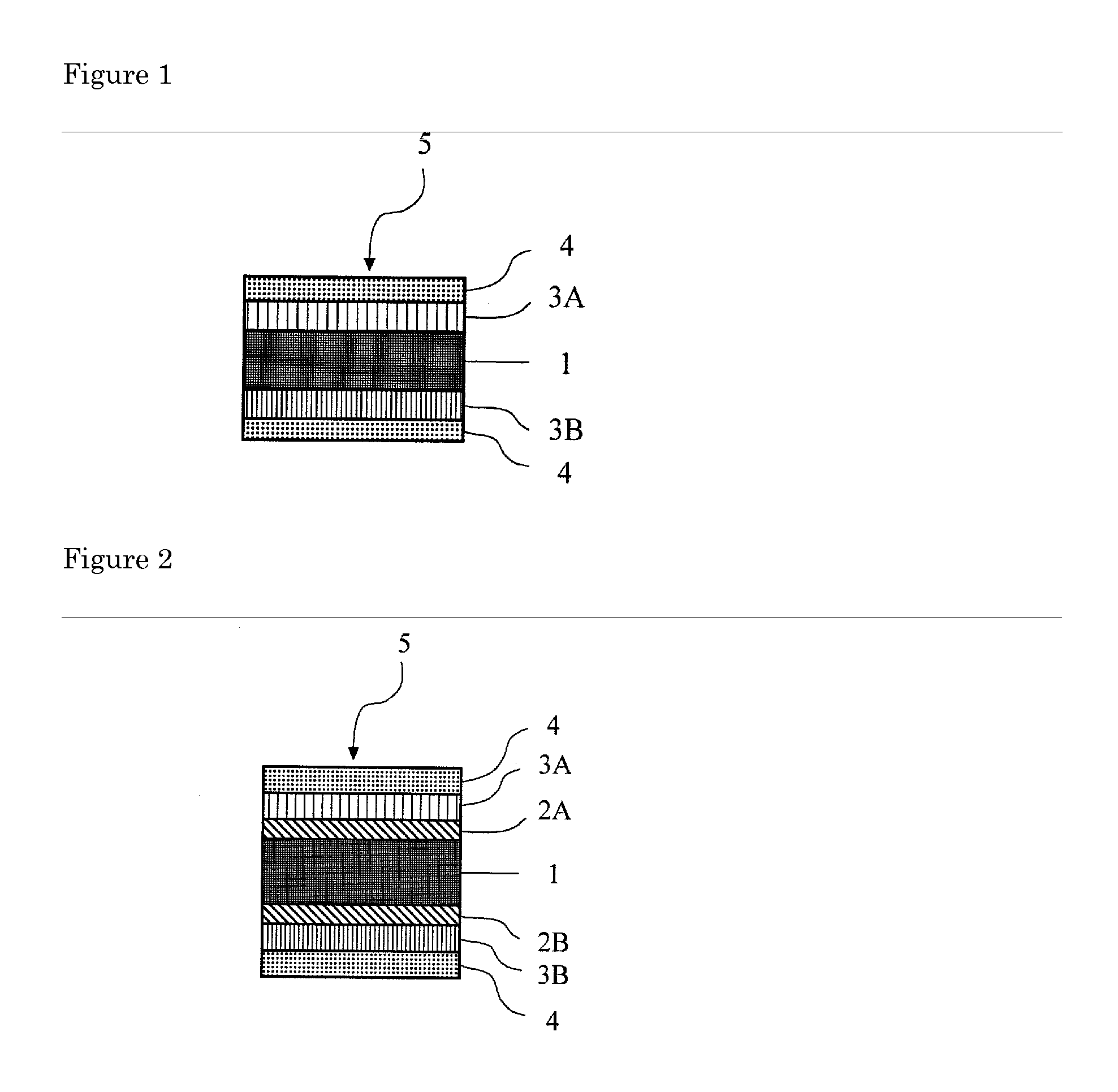Process for producing organic electroluminescent panel
- Summary
- Abstract
- Description
- Claims
- Application Information
AI Technical Summary
Benefits of technology
Problems solved by technology
Method used
Image
Examples
example 1
[0077]A toluene solution containing 100 wt parts of a pressure-sensitive adhesive based on a copolymer of 2-ethylhexyl acrylate / ethyl acrylate / methyl methacrylate / 2-hydroxyethyl acrylate (30 wt parts / 70 wt parts / 5 wt parts / 5 wt parts) and 1 wt part of an isocyanate-based crosslinking agent blended therein was coated and dried on both faces of a base substance polyester film (thickness: 100 μm) to a thickness of 20 μm after drying, to give rubber-like organic elastic layers A and B.
[0078]Then, a toluene solution containing 100 wt parts of a pressure-sensitive adhesive based on a copolymer of 2-ethylhexyl acrylate / ethyl acrylate / methyl methacrylate / 2-hydroxyethyl acrylate (30 wt parts / 70 wt parts / 5 wt parts / 5 wt parts), 2 wt parts of an isocyanate-based crosslinking agent, and 30 wt parts of heat-expandable microspheres A (trade name “Microsphere F100D”, produced by Matsumoto Yushi-Seiyaku Co., Ltd., foaming-starting temperature: approximately 170° C.) blended therein was coated and d...
example 2
[0081]A toluene solution containing 100 wt parts of a pressure-sensitive adhesive based on a copolymer of 2-ethylhexyl acrylate / ethyl acrylate / acrylic acid (30 wt parts / 70 wt parts / 5 wt parts) and 2 wt parts of an isocyanate-based crosslinking agent blended therein was coated and dried on both faces of a base substance polyester film (thickness: 100 μm) to a thickness of 20 μm after drying, to give a rubber-like organic elastic layers C and D.
[0082]Then, a toluene solution containing 100 wt parts of a pressure-sensitive adhesive based on a copolymer of 2-ethylhexyl acrylate / ethyl acrylate / acrylic acid (30 wt parts / 70 wt parts / 5 wt parts), 5 wt parts of an isocyanate-based crosslinking agent, and 30 wt parts of heat-expandable microspheres A (trade name: “Microsphere F100D”, produced by Matsumoto Yushi-Seiyaku Co., Ltd., foaming-starting temperature: approximately 170° C.) blended therein was coated and dried on a separator to a thickness of 30 μm, to give a thermal release adhesive ...
PUM
| Property | Measurement | Unit |
|---|---|---|
| Temperature | aaaaa | aaaaa |
| Thickness | aaaaa | aaaaa |
| Fraction | aaaaa | aaaaa |
Abstract
Description
Claims
Application Information
 Login to View More
Login to View More - R&D
- Intellectual Property
- Life Sciences
- Materials
- Tech Scout
- Unparalleled Data Quality
- Higher Quality Content
- 60% Fewer Hallucinations
Browse by: Latest US Patents, China's latest patents, Technical Efficacy Thesaurus, Application Domain, Technology Topic, Popular Technical Reports.
© 2025 PatSnap. All rights reserved.Legal|Privacy policy|Modern Slavery Act Transparency Statement|Sitemap|About US| Contact US: help@patsnap.com


